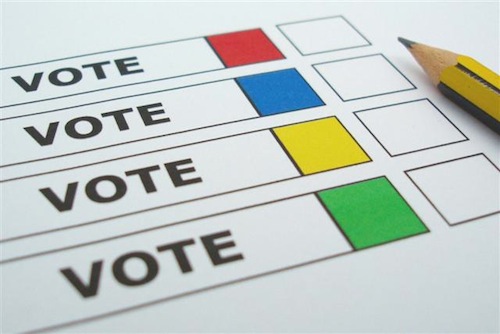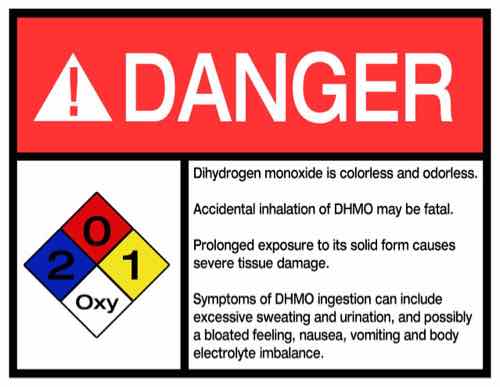Opioids/Heroin Substantially More Dangerous Than Marijuana
The federal government considers marijuana a Schedule 1 drug, along with heroin.
Schedule I drugs, substances, or chemicals are defined as drugs with no currently accepted medical use and a high potential for abuse. Schedule I drugs are the most dangerous drugs of all the drug schedules with potentially severe psychological or physical dependence. (DEA)
I’d agree that heroin is among the “most dangerous drugs”, the reality is harsh:
Amid a national spike in heroin deaths, the St. Louis metro area saw heroin and prescription painkiller fatalities more than triple over a seven-year span, climbing to 445 in 2014. Preliminary numbers for 2015 show a decrease, but probably no lower than in 2013, when 342 people died.
The recent decline in overdoses probably has less to do with lower drug use than it does with an increased use by doctors and emergency responders of a drug that can stop an overdose. (Post-Dispatch: Heroin’s youngest addicts are dying in high school)
Prescription opioids are considered less-dangerous, so they’re in Schedule 2. Still, overdose deaths are also an epidemic:
More people died from drug overdoses in 2014 than in any year on record. The majority of drug overdose deaths (more than six out of ten) involve an opioid. And since 1999, the rate of overdose deaths involving opioids (including prescription opioid pain relievers and heroin) nearly quadrupled. From 2000 to 2014 nearly half a million people died from drug overdoses. 78 Americans die every day from an opioid overdose.
We now know that overdoses from prescription opioid pain relievers are a driving factor in the 15-year increase in opioid overdose deaths. Since 1999, the amount of prescription opioids sold in the U.S. nearly quadrupled, yet there has not been an overall change in the amount of pain that Americans report. Deaths from prescription opioids—drugs like oxycodone, hydrocodone, and methadone—have also quadrupled since 1999. (CDC: Drug overdose deaths in the United States hit record numbers in 2014)
What do opioids have to do with heroin?
Opiates are alkaloids derived from the opium poppy. Opium is a strong pain relieving medication, and a number of drugs are also made from this source.
Types Of Opiates
- Morphine
- Codeine
- Heroin
- Opium
Opioids are synthetic or partly-synthetic drugs that are manufactured to work in a similar way to opiates. Their active ingredients are made via chemical synthesis. Opioids may act like opiates when taken for pain because they have similar molecules.
Types Of Opioids
- Methadone
- Percocet, Percodan, OxyContin (oxycodone)
- Vicodin, Lorcet, Lortab (hydrocodone)
- Demerol (pethidine)
- Dilaudid (hydromorphone)
- Duragesic (fentanyl)
(Difference Between Opiates And Opioids)
More…
Today’s typical heroin addict starts using at 23, is more likely to live in the affluent suburbs and was likely unwittingly led to heroin through painkillers prescribed by his or her doctor.
While heroin is illicit and opioid pills such as oxycontin are FDA-approved, each is derived from the poppy plant. Their chemical structures are highly similar and they bind to the same group of receptors in the brain. (A few opioids, like fentanyl, are totally synthetic but designed to bind with those same receptors).In any case, the various drugs produce the same result: an increase in pain tolerance and a sense of euphoria, along with drowsiness, occasional nausea and, at higher doses, a slowing of the user’s breathing.
(CNN: Unintended consequences: Why painkiller addicts turn to heroin)
Yes, those addicted to prescription painkillers often turn to the similar-acting heroin — for a fraction of the cost. What alternative is there to manage pain? Medical marijuana:
America has a major problem with prescription pain medications like Vicodin and OxyContin. Overdose deaths from these pharmaceutical opioids have approximately tripled since 1991, and every day 46 people die of such overdoses in the United States.
However, in the 13 states that passed laws allowing for the use of medical marijuana between 1999 and 2010, 25 percent fewer people die from opioid overdoses annually.
“The difference is quite striking,” said study co-author Colleen Barry, a health policy researcher at Johns Hopkins Bloomberg School of Public Health in Baltimore. The shift showed up quite quickly and become visible the year after medical marijuana was accepted in each state, she told Newsweek. (IN STATES WITH MEDICAL MARIJUANA, PAINKILLER DEATHS DROP BY 25 PERCENT)
What? There’s a link between reduction in painkiller deaths and medical marijuana:
States that have legalized marijuana for managing chronic pain have significantly fewer deaths from prescription painkiller overdoses each year, according to a new study published Monday in JAMA Internal Medicine.
Researchers looked at medical marijuana laws and death certificate data in all 50 states between 1999 and 2010. During that time, just 13 states had medical marijuana laws in place.
“We found there was about a 25% lower rate of prescription painkiller overdose deaths on average after implementation of a medical marijuana law,” lead study author Dr. Marcus Bachhuber said. (CNN: Medical marijuana laws may reduce painkiller overdoses)
You might think this is just replacing one overdose for another. Not really:
If you mean can they overdose and die from marijuana—the answer is no, its not very likely. But they can experience extreme anxiety (panic attacks) or psychotic reactions (where they lose touch with reality and may become paranoid). And people can and do injure themselves because of marijuana’s effects on judgment, perception, and coordination. For example, marijuana affect the skills you need to drive (e.g., concentration, reaction time) so people can injure themselves and others if they drive while under the influence. (NIDA for Teens: Can someone overdose on marijuana?)
Marijuana isn’t safe — but it’s not opioids or heroin either. In my view, alcohol & tobacco are also more dangerous than marijuana.
Here are the results from the recent Sunday Poll:
Q: Opioids/herion vs marijuana — are they equally dangerous drugs?
- Marijuana is substantially more dangerous than opioids/heroin 1 [0.73%]
- Marijuana is more dangerous than opioids/heroin 1 [0.73%]
- Marijuana is slightly more dangerous than opioids/heroin 0 [0%]
- Opioids/heroin & marijuana are equally dangerous 0 [0%]
- Opioids/heroin are slightly more dangerous than marijuana 2 [1.46%]
- Opioids/heroin are more dangerous than marijuana 11 [8.03%]
- Opioids/heroin are substantially more dangerous than marijuana 120 [87.59%]
- Unsure/No Answer 2 [1.46%]
Huge response, but the percentages are roughly the same as they were after just two hours into the poll. Very few people think marijuana is equal or more dangerous than opioids/heroin.To reduce addiction & overdoses, we need to approve medical marijuana in Missouri in November.
Locally, a new overdose prevention bill will be signed into law Friday morning (event link).
— Steve Patterson


